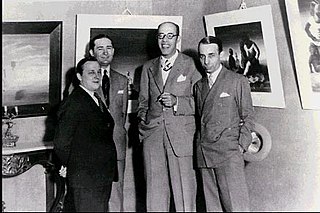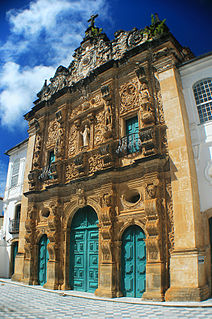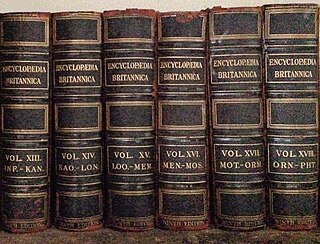
Candomblé Ketu is the largest and most influential branch (nation) of Candomblé, a religion practiced in Brazil, Argentina, and Uruguay. The word Candomblé means “ritual dancing or gather in honor of gods” and Ketu is the name of the Ketu region of Benin.Its liturgical language, known as Iorubá or Nagô, is a dialect of Yoruba. Candomblé Ketu developed in the early 19th century and gained great importance to Brazilian heritage in the 20th century.

Lúcio Marçal Ferreira Ribeiro Lima Costa was a Brazilian architect and urban planner, best known for his plan for Brasília.
Talian is a dialect of the Venetian language, spoken primarily in the Serra Gaúcha region in the northeast of the state of Rio Grande do Sul in Brazil. It is also spoken in other parts of Rio Grande do Sul, as well as in parts of Espirito Santo and of Santa Catarina.

João Cabral de Melo Neto, was a Brazilian poet and diplomat, and one of the most influential writers in late Brazilian modernism. He was awarded the 1990 Camões Prize and the 1992 Neustadt International Prize for Literature, the only Brazilian poet to receive such award to date. He was considered until his death a perennial competitor for the Nobel Prize in Literature.

Academia Brasileira de Letras (ABL) is a Brazilian literary non-profit society established at the end of the 19th century by a group of 40 writers and poets inspired by the Académie Française. The first president, Machado de Assis, declared its foundation on December 15, 1896, with the by-laws being passed on January 28, 1897. On July 20 of the same year, the academy started its operation.

Cerro Largo Department is a department of Uruguay. Its capital is Melo. It is located in the east of the country, bordering Brazil to its northeast with Yaguaron River as the natural border, Treinta y Tres Department to its south, Durazno Department to its west and the departments of Tacuarembó and Rivera to its northwest with Negro River as its natural border with them.

Paulo Duarte, full name Paulo Alfeu Junqueira Duarte, was a Brazilian archaeologist and humanist. He was the first person to practice archaeology and advocate for the protection of archaeological sites on a large scale in Brazil.

Cachoeira, is an inland municipality of Bahia, Brazil, on the Paraguaçu River. The town exports sugar, cotton and tobacco and is a thriving commercial and industrial centre.
Latin American literature consists of the oral and written literature of Latin America in several languages, particularly in Spanish, Portuguese, and the indigenous languages of the Americas as well as literature of the United States written in the Spanish language. It rose to particular prominence globally during the second half of the 20th century, largely due to the international success of the style known as magical realism. As such, the region's literature is often associated solely with this style, with the 20th Century literary movement known as Latin American Boom, and with its most famous exponent, Gabriel García Márquez. Latin American literature has a rich and complex tradition of literary production that dates back many centuries.
The International Institute for Conservation of Historic and Artistic Works (IIC) is a global organisation for conservation and restoration professionals with over two thousand members in over fifty countries. IIC seeks to promote the knowledge, methods and working standards needed to protect and preserve historic and artistic works throughout the world.

The Catimbau National Park is a national park in the state of Pernambuco, Brazil. It protects a semi-arid area of caatinga with sandstone caverns and caves in which prehistoric art has been found.

The Historic Center (US) or Centre of Salvador de Bahia in Brazil, also known as the Pelourinho or Pelo, is a historic neighborhood in western Salvador, Bahia. It was the city's center during the Portuguese colonial period and was named for the whipping post in its central plaza where African slaves received punishment for various infractions, as well as for disciplinary purposes. The Historic Center is extremely rich in historical monuments dating from the 17th through the 19th centuries.

Itaparica is a municipality located in the Brazilian island of the same name in the state of Bahia. The municipality covers 13% of the island; the remainder belongs to the municipality of Vera Cruz. The municipality of Itaparica has a population of is 22,114 and covers an area of 115.922 square kilometres (44.758 sq mi).

Rodrigo Melo Franco de Andrade (1898–1969) was a Brazilian art critic and historian. He served as director of preservation of artistic patrimony of Brazil at the Ministry of Education. He is credited, among many similar discoveries, with reviving interest in Antônio Francisco Lisboa. He is the author of Monumentos Históricos y Arqueológicos de Brasil.

Nazaré, also known as Nazaré das Farinhas, is a municipality in the state of Bahia in the North-East region of Brazil. The municipality has a population of 29,546 with a population density of 107 inhabitants per square kilometer. It is located 110 km (68 mi) from the state capital of Bahia, Salvador. Nazaré is within the Bahian Recôncavo, an interior region of the state of Bahia. It borders the municipalities of Muniz Ferreira, Aratuípe, Jaguaripe, São Felipe, and Maragogipe. The Jaguaripe River crosses through the middle of the town. It is sits on the intersection of two Bahian state highways, BA-001 and BA-046..

Daniel Munduruku is a Brazilian writer and educator. He is member of the Munduruku indigenous people. His children's books deal about traditional indigenous life and tales and have been awarded several prizes. Munduruku holds three undergraduate degrees in Philosophy, History and Psychology. He has a master's degree in Social Anthropology and a doctorate in Education by the University of São Paulo.

Miguel Ángel Asturias Rosales was a Nobel Prize-winning Guatemalan poet-diplomat, novelist, playwright and journalist. Asturias helped establish Latin American literature's contribution to mainstream Western culture, and at the same time drew attention to the importance of indigenous cultures, especially those of his native Guatemala.

The Church of the Third Order of Saint Francis is an 18th-century Roman Catholic church in Salvador, Bahia, Brazil and seat of the Third Order of Saint Francis in Brazil. The church is one of the main elements of the Historic Center of Salvador and lies within the UNESCO World Heritage Site of the city. It was listed as a historic structure by National Institute of Historic and Artistic Heritage (IPHAN) in 1941. The church was constructed as an annex to the São Francisco Church and Convent. It is noted for its distinctive Plateresque-style façade, an example unique in Brazil.















